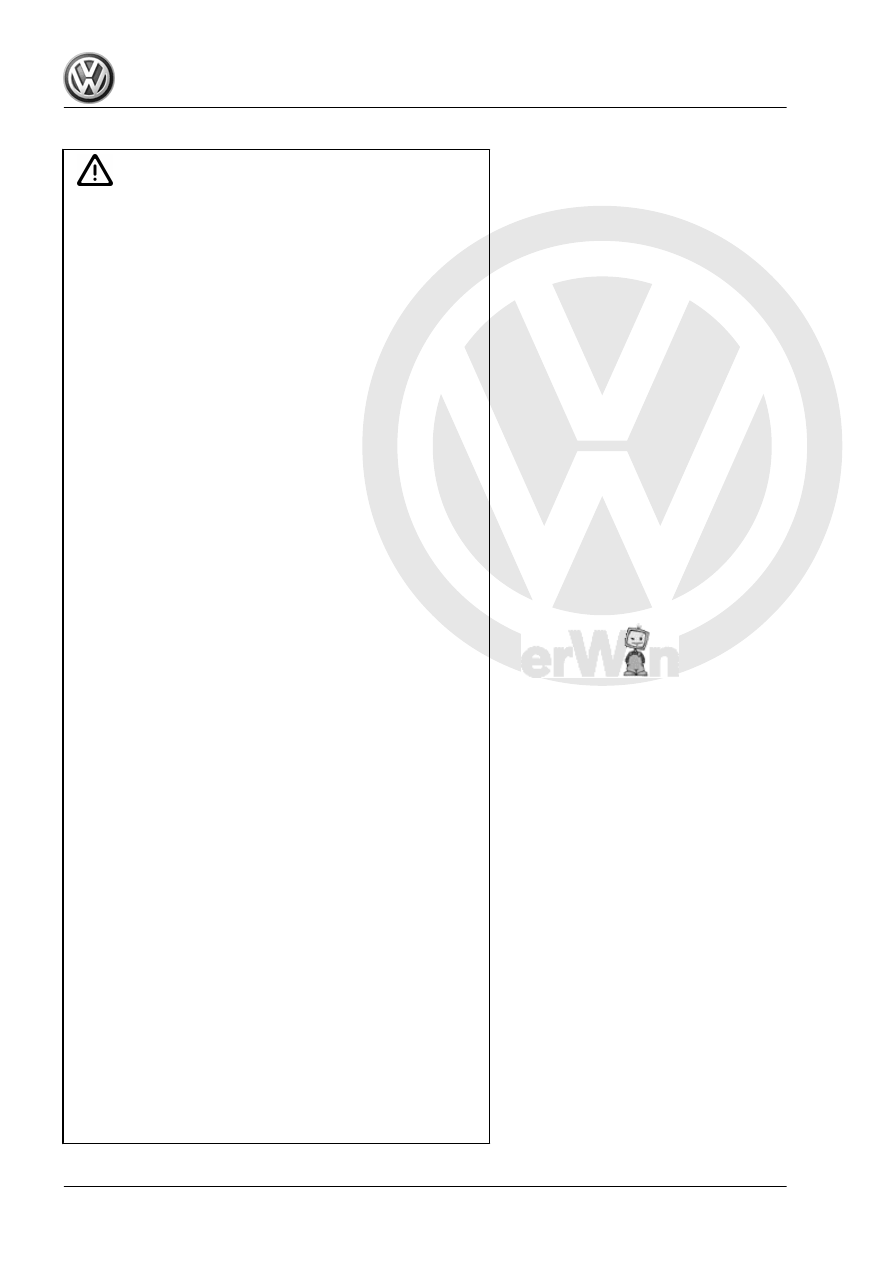Volkswagen Golf / Golf GTI / Golf Variant. Manual - part 339

General
Caution
♦ Testing, assembly, and repair work may only be per‐
formed by qualified personnel.
♦ There is no change interval for airbag units.
♦ Never test with a test light, volt meter or ohm meter.
♦ The pyrotechnic components may be checked only when
they are installed and with a Volkswagen approved vehicle
diagnostic tester.
♦ When working on pyrotechnic components and on the Air‐
bag Control Module - J234- , the battery ground cable
must be disconnected when the ignition is switched on.
Then cover the negative terminal.
♦ Wait for 10 seconds after disconnecting the battery.
♦ The ignition must be SWITCHED ON when connecting the
battery. Nobody should be inside the vehicle with doing
this.
♦ If the ignition is not switched on after the battery is recon‐
nected - “indicator lamps in the instrument cluster do not
light up” - the ignition (key/button) may only be switched
on when the driver seat is positioned all the way back.
♦ Follow all steps after connecting the battery. Refer to ⇒
Electrical Equipment; Rep. Gr. 27 ; Battery; Battery, Dis‐
connecting and Connecting .
♦ Before handling pyrotechnic components of the restraint
system, for example, before disconnecting the electrical
harness connector, the technician must discharge static
electricity. Touching grounded metal parts, for example,
touching the door striker, will discharge the static electric‐
ity.
♦ Wash hands after touching ignited restraint system pyro‐
technic components.
♦ Pyrotechnic components may not be opened nor repaired;
always use new parts (risk of injury).
♦ Pyrotechnic components that have fallen onto a hard sur‐
face or show signs of damage must not be installed in
vehicle.
♦ Pyrotechnic components should be installed immediately
upon removal from shipping package.
♦ If the work must be stopped for awhile, put the pyrotechnic
component back into its shipping package.
♦ Do not leave the pyrotechnic component out unattended.
♦ When connecting the passenger safety system pyrotech‐
nic components, only the person performing the work
should be in the vehicle.
♦ Do not use any grease, cleaning solutions or similar on
pyrotechnic components.
♦ Replace the airbag unit if any contaminants such as oil,
grease, paint, dye or solvents have penetrated the fabric.
♦ Pyrotechnic components must not be exposed to temper‐
atures over 100 °C (212 °F), even for a short time.